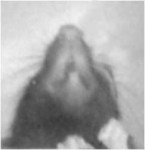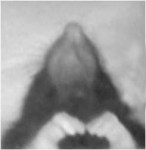When we encounter a taste, we appreciate both its chemosensory properties and its palatability—the degree to which the taste is pleasurable or aversive. Recent work suggests that the processing of this complex taste experience may involve coordination between multiple brain areas. Dissecting these interactions help understand the organization and working of the taste system.
 The lateral hypothalamus (LH) is a region of the brain important for feeding. In a rodent, damage the LH, and the rodent may starve itself to death; stimulate it, and you get a curious mix of voracious eating and expressions of disgust over what is being eaten. Such data suggest that LH plays a complex game of balancing escape and avoidance, palatability and aversion, during the evaluation of a taste stimulus. Little is known, however, about how neurons in LH actually respond to tastes of different valences.
The lateral hypothalamus (LH) is a region of the brain important for feeding. In a rodent, damage the LH, and the rodent may starve itself to death; stimulate it, and you get a curious mix of voracious eating and expressions of disgust over what is being eaten. Such data suggest that LH plays a complex game of balancing escape and avoidance, palatability and aversion, during the evaluation of a taste stimulus. Little is known, however, about how neurons in LH actually respond to tastes of different valences.
Brandeis postdocs Jennifer Li and Takashi Yoshida. undergraduate Kevin Monk ’13, and Associate Professor of Psychology Don Katz have recently published a study of neuronal reponses in LH in the Journal of Neuroscience. They have shown that taste-responsive neurons in LH break neatly down into two groups–one that responds preferentially to palatable tastes and one to aversive tastes. Virtually every taste neuron in LH could be identified as a palatable- or aversive-preferring neuron. In addition, even without considering the specific tastes to which a particular neuron responded, these two groups of neurons could be differentiated according to their baseline firing rate, shape of response, and tuning width. While these neurons were spatially intermingled, several pieces of data (functional connectivity analysis, relationship to responses in amygdala and cortex) suggest that they are parts of distinct neural circuits. These results offer insights into the multiple feeding-related processes that LH manages, and how the hypothalamus’ role in these processes might be related to its connection to other parts of the taste system.
Li JX, Yoshida T, Monk KJ, Katz DB. Lateral Hypothalamus Contains Two Types of Palatability-Related Taste Responses with Distinct Dynamics. J Neurosci. 2013;33(22):9462-73.



